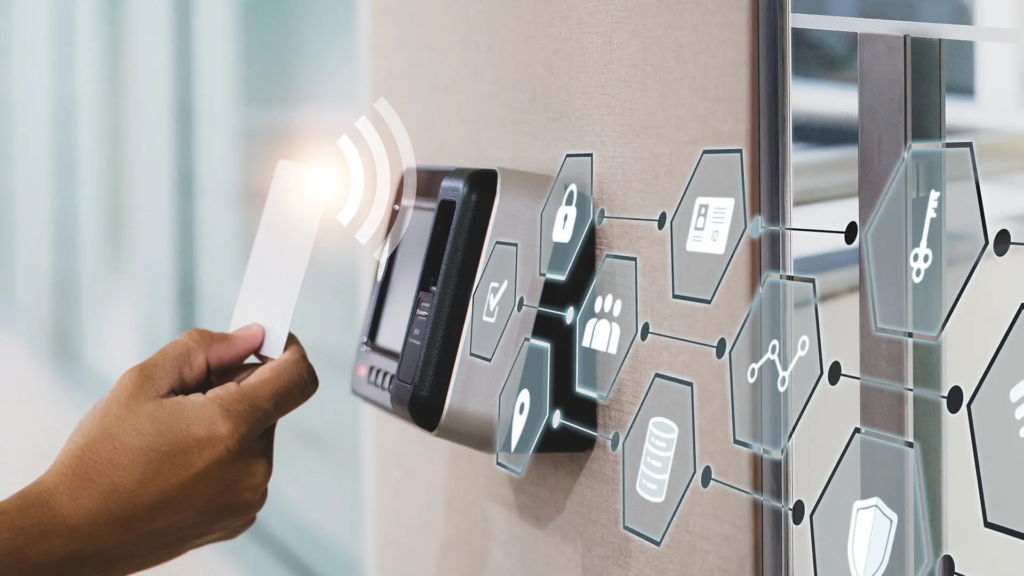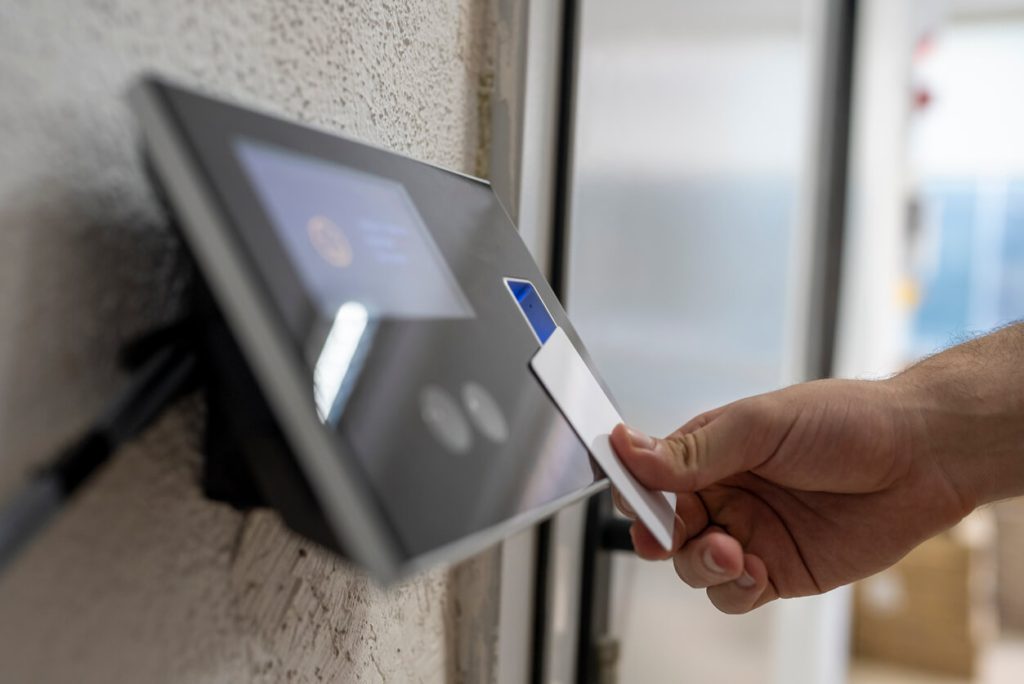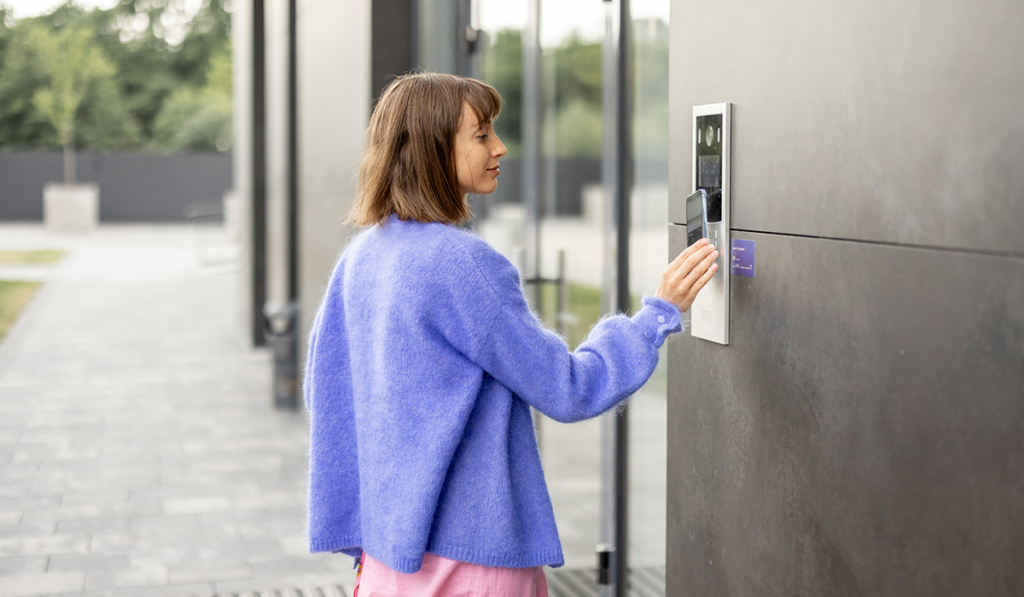
Proximity Card Access Systems: Enhancing Security in Modern Workplaces
Sign-ins—Today’s workplaces are adopting Proximity Card systems for seamless, secure access control. With just a tap or wave of a card, employees gain instant entry while businesses maintain precise oversight of facility access. These contactless systems eliminate security vulnerabilities, streamline operations, and provide detailed entry logs, making them essential for any security-conscious organization.
Introduction and working principle of proximity card system
A Proximity Card system uses RFID (Radio Frequency Identification) technology to grant or deny access. Each card has a small embedded antenna that communicates with a reader when it comes within range. These systems are designed to be contactless, which makes them both hygienic and low-maintenance—two big wins in any modern office.
But the magic lies in customizability and integration. Administrators can assign cards based on roles, departments, or shift times and lose a card. No problem. Access can be revoked instantly without changing any physical locks. This level of flexibility makes Proximity Card systems ideal for dynamic environments where people, roles, and access needs change often.

Precision Access Control With Flexible Proximity Solutions
Security needs vary widely from one organization to another, and Proximity Card systems can be tailored accordingly. For instance, a software development firm may only want engineers accessing server rooms, while a law office might limit file room entry to senior partners. These systems easily allow for that level of granularity.
Moreover, time-based access rules add an extra layer of protection. Businesses can program cards to work only during office hours or restrict them to specific days. If an intern is only supposed to come in twice a week, their card reflects that. This adaptive control makes security smarter, not just stricter.
Audit Trails and Real-Time Monitoring
Real-time tracking is one of the most valuable features of a Proximity Card system. Businesses can monitor who enters which area, when, and how frequently. This data isn’t just valuable for security but also plays a significant role in operational insights. For example, it can reveal underused areas or detect patterns in staff movement.
Furthermore, detailed audit trails help investigate security breaches. If something goes missing or an unauthorized entry occurs, administrators can quickly pull logs to find out what happened. This capability transforms access control from passive defense to an active intelligence tool.

Integrate with other systems to create a smart office ecosystem
Proximity Card access doesn’t operate in a silo. It can integrate with HR systems, visitor management tools, alarm systems, and building automation. Do you want the lights to turn on when someone enters a room? Or is the temperature to adjust based on occupancy? These scenarios are easily programmable.
For HR, syncing access data helps track attendance, overtime, and space usage. Meanwhile, IT teams can use identical cards to authenticate user logins or secure digital data. The result is a more connected, efficient, and responsive workplace where systems talk to each other seamlessly.
Proximity Card vs. Biometric and Keypad Systems: A Fair Comparison
While Proximity Cards offer robust features, they’re not the only options. Biometric scanners and keypad locks are also popular. However, each comes with trade-offs. Biometric systems can be expensive and raise privacy concerns, while keypads often suffer from code sharing and wear issues.
Proximity Card systems strike a solid balance. They’re cost-effective, quick to install, and non-invasive. Plus, they support multi-factor authentication. Pairing a card with a PIN or fingerprint reader can add extra layers of security, especially for high-risk areas like server rooms or executive offices.

The ROI of Security: Saving Money by Preventing Risk
Spending on security might seem like a sunk cost, but it’s an investment with measurable returns. Proximity Card systems can reduce the likelihood of theft, unauthorized access, and even liability issues. Think about the cost of one break-in versus the price of installing a scalable access system.
Moreover, these systems save time—there is no need for physical keys, manual sign-in sheets, or security personnel stationed at every door. Everything runs on automation. Over time, the savings in operational efficiency and reduced risk can significantly outweigh the system’s upfront cost.
The future development direction of the proximity card system
As workplaces become more intelligent and connected, Proximity Card systems are also evolving. Mobile credentialing is one emerging trend—employees can use their smartphones instead of a card. Cloud-based access management is also rising, allowing administrators to update permissions remotely in real time.
Artificial intelligence is another exciting frontier. AI can analyze access patterns and flag anomalies as a proactive watchdog. Integrating proximity systems with facial recognition or behavior analytics could enhance predictive security, reducing human error and increasing response speed.

Every Modern Workplace Needs a Proximity Card System
Proximity Card access systems are no longer optional—they’re essential for maintaining physical security and operational fluidity in the modern workplace. They offer the perfect combination of simplicity, power, and adaptability, making them suitable for businesses of all sizes.
Whether you’re upgrading from a legacy system or building a new office from scratch, investing in a Proximity Card setup gives you not just control—but peace of mind. And in a world where one breach can cost millions, that peace of mind is worth every swipe.


